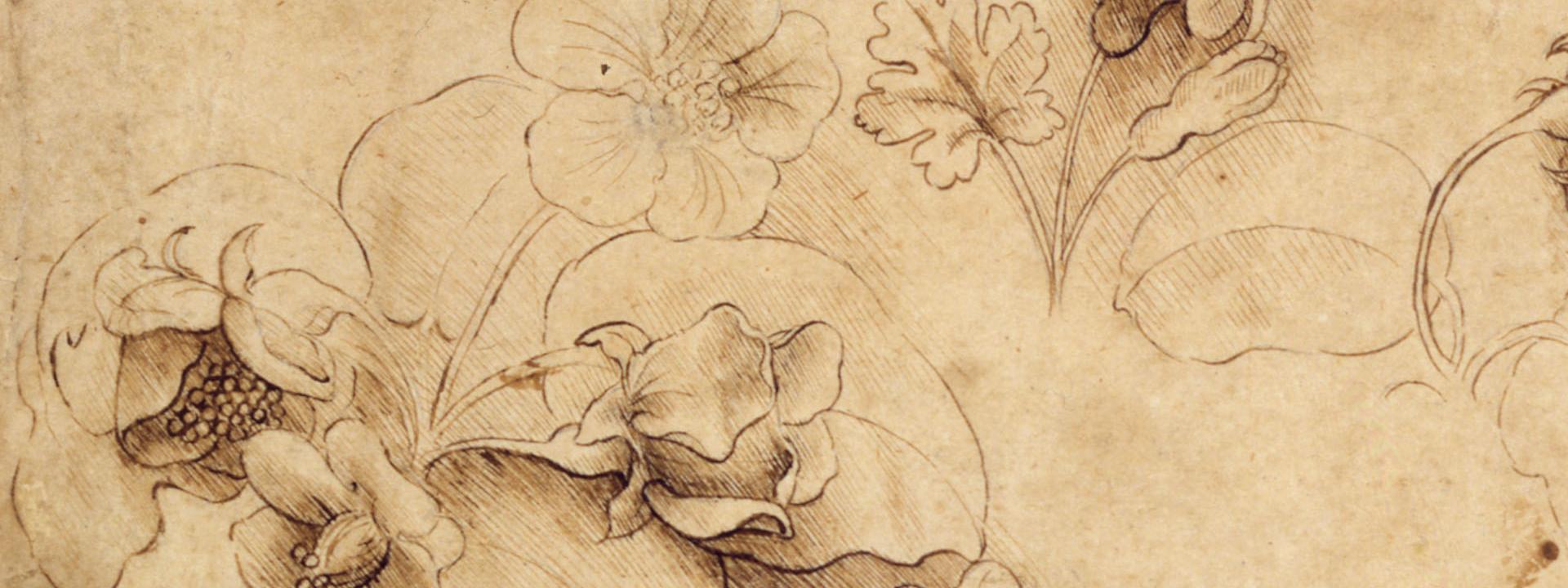DISPLAY AND CONSERVATION
To avoid deterioration, the drawing must be conserved in a light- and temperature-controlled environment. For this reason, drawings and prints are not always on permanent display.
STUDY OF FLOWERS
The Gallerie dell’Accademia’s beautiful drawing presents and analyses different positions of flowers belonging to the families of Liliaceae, Ranunculaceae, Gramineae, and perhaps Rosaceae. The drawing is part of a vast group of studies Leonardo dedicated to botanical observation and particularly the description of flowers, which he himself compiled a precise list of in his Codex Atlanticus (f. 324r), including “many flowers portrayed in their natural state”.
The works he dedicated to the observation of plants – similar to those dedicated to anatomy, optics, geology, or astronomy – go a long way to explain how Leonardo’s artistic practice was foremostly cognitive research into the surrounding world. There are many extraordinary observations regarding the plant world that were later confirmed by modern science.
The detailed precision of his descriptions of botanical species would later find its way into finished works such as the Uffizi’s Annunciation, the two versions of the Virgin of the Rocks at London’s National Gallery and Paris’s Louvre, or in the juniper plant in the Ginevra de’ Benci portrait at the National Gallery in Washington.

